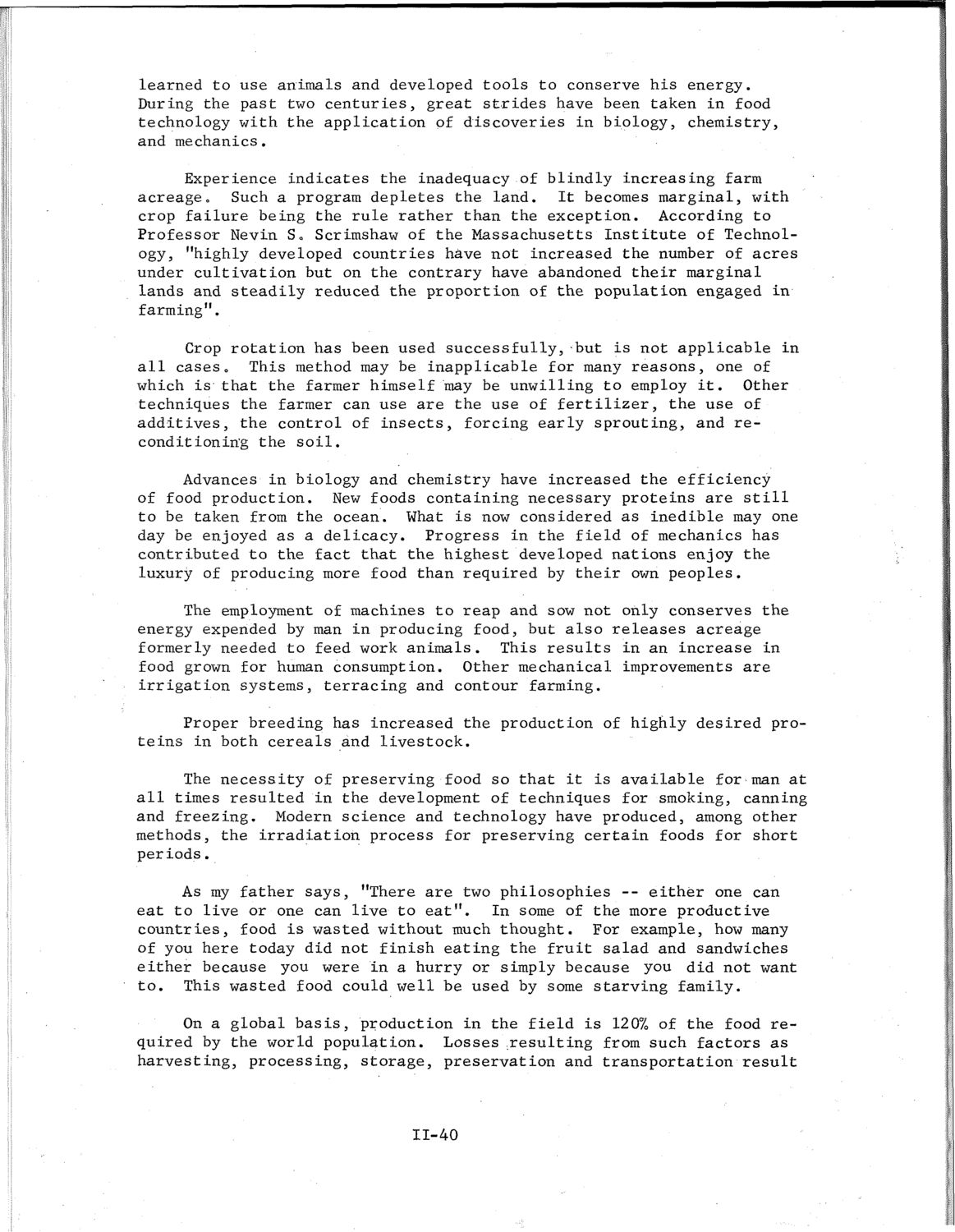| |
| |
Caption: SWE - Proceedings of the First International Conference of Women Engineers and Scientists
This is a reduced-resolution page image for fast online browsing.

EXTRACTED TEXT FROM PAGE:
learned to use animals and developed tools to conserve his energy. During the past two centuries, great strides have been taken in food technology with the application of discoveries in biology, chemistry, and mechanics. Experience indicates the inadequacy of blindly increasing farm acreage. Such a program depletes the land. It becomes marginal, with crop failure being the rule rather than the exception. According to Professor Nevin S. Scrimshaw of the Massachusetts Institute of Technology, "highly developed countries have not increased the number of acres under cultivation but on the contrary have abandoned their marginal lands and steadily reduced the proportion of the population engaged in farming". Crop rotation has been used successfully, but is not applicable in all cases. This method may be inapplicable for many reasons, one of which is that the farmer himself may be unwilling to employ it. Other techniques the farmer can use are the use of fertilizer, the use of additives, the control of insects, forcing early sprouting, and reconditioning the soil. Advances in biology and chemistry have increased the efficiency of food production. New foods containing necessary proteins are still to be taken from the ocean. What is now considered as inedible may one day be enjoyed as a delicacy. Progress in the field of mechanics has contributed to the fact that the highest developed nations enjoy the luxury of producing more food than required by their own peoples. The employment of machines to reap and sow not only conserves the energy expended by man in producing food, but also releases acreage formerly needed to feed work animals. This results in an increase in food grown for human consumption. Other mechanical improvements are irrigation systems, terracing and contour farming. Proper breeding has increased the production of highly desired proteins in both cereals and livestock. The necessity of preserving food so that it is available for man at all times resulted in the development of techniques for smoking, canning and freezing. Modern science and technology have produced, among other methods, the irradiation process for preserving certain foods for short periods. As my father says, "There are two philosophies -- either one can eat to live or one can live to eat". In some of the more productive countries, food is wasted without much thought. For example, how many of you here today did not finish eating the fruit salad and sandwiches either because you were in a hurry or simply because you did not want to. This wasted food could well be used by some starving family. On a global basis, production in the field is 120% of the food required by the world population. Losses resulting from such factors as harvesting, processing, storage, preservation and transportation result 11-40
| |